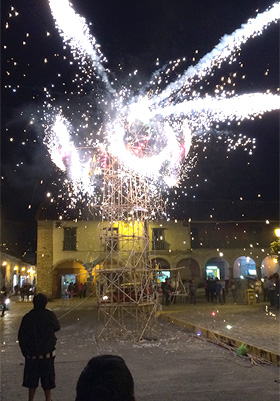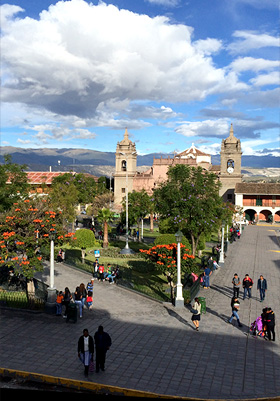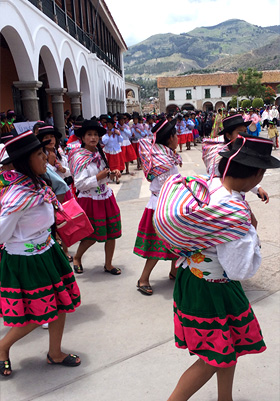

Ayacucho, also known as Huamanga or San Cristobal de Huamanga, is the capital city of the Region of Ayacucho. Founded in 1540 by the Spanish colonial power as San Juan de la Frontera de Huamanga, its name was changed in 1825 to Ayacucho.
The name Ayacucho derives from the Quechua words aya and kuchu, meaning death and corner after the final battle for independence from colonial rule was fought in the nearby battlefield of La Quinua in 1824, when the multinational independence army defeated the Spanish royal forces.
The Ayacucho region is located southeast of Lima, the capital of Peru, at 2,780 meters above sea level. Ayacucho has been inhabited for thousands of years by varying indigenous cultures, including the Wari, Chanka, and Nasca cultures, before being annexed into the Inca Empire.
Ayacucho is famous for its 37 churches and its large religious celebrations, especially during Holy Week, and for its different expressions of popular art such as ceramic handicrafts, embroidery, music and dance



In the early 1980s, the Maoist group Shining Path launched its terrorist campaign against the Peruvian government in Ayacucho and used it as its base of operations. After several years of a bloody confrontation, Shining Path was defeated when its leader Abimael Guzmán was captured in 1992 and put in prison. Many peasants that fled the region to escape the violence in the 1980s have returned to recover their land and work in agriculture.
Ayacucho is one of the poorest regions in Peru. Its economy is based mostly on agriculture and handcrafts. Potato, maize, cacao, barley and quinoa are the main crops. Textiles, pottery, leather goods and silver filigree are the region’s main craft products.